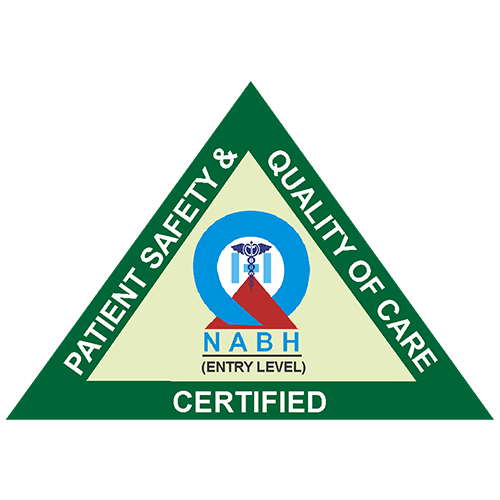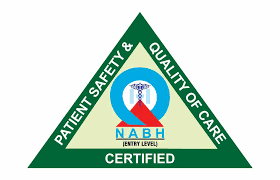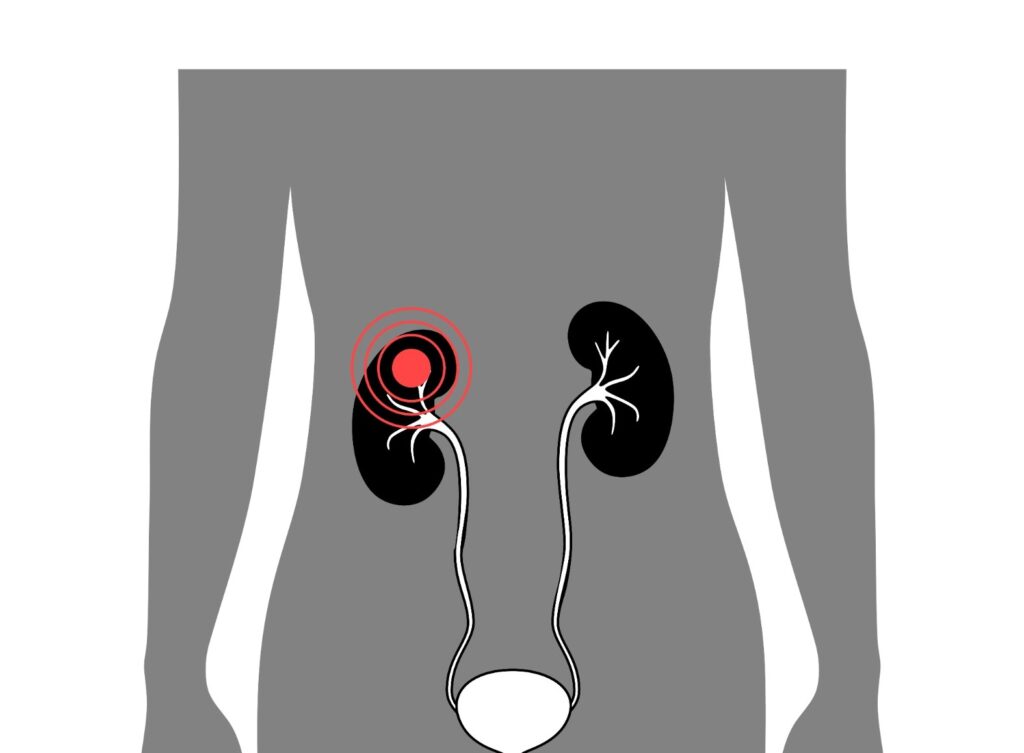The passage of urine through the body must be smooth and unhindered since it aids in the removal of waste materials, but occasionally this is not the case due to obstructions in the urinary system. Humans have four main organs that make up their urinary system: the kidney, urethra, ureters, and urinary bladder. If any one of these systems gets blocked, it affects the urinary flow. If the urine does not pass through the body normally and is held, it may be the cause of an infection as well as other negative consequences, including kidney stones or pain.
What Elements Make Up the Urinary Tract?
The urinary tract’s parts and their respective functions are listed below:
- Kidneys – They are two in number and are responsible for the formation of urine.
- Ureters – Two tubes-like structures that allow urine to go from the kidneys to the bladder.
- Urinary Bladder – It is a bag-like structure that acts as the storage site for urine.
- Urethra – It is a tube-like structure that sends the urine from the bladder out of the body.
What Is an Obstruction of the Urinary Tract?
Urinary tract obstruction (urine blockage), to put it simply, is a barrier that prevents urine from flowing freely, harming the urinary system’s organs in the process. The blockage may be total or only partially present, and it may have been there for some time or may have appeared unexpectedly. Any organ of the urinary system, including the kidneys, ureters, bladder, and urethra, may become blocked. In each instance, the passage of urine is hampered, raising the possibility of a urethral infection. It might be congenital (existing at birth) or develop later on during life, primarily affecting the elderly population.
What are a few of the causes of obstruction of the urinary tract?
The blockage of the urinary system is brought on by a number of factors. Following is a list of some of them:
Increased Prostate Size: The prostate is located right below the bladder, and it is frequently seen that as men age, their hormone levels alter and their prostate gland enlarges, which reduces urine flow. This is the most common cause of the blockage of urine in males.
Kidney Stones: The existence of stones often causes no symptoms, but when they become lodged in the tubes that carry urine from the kidneys to the bladder, there is a backward flow of urine that causes severe discomfort in the bladder.
Existence of a tumour: A tumour is an unregulated cell growth that can affect nearly any bodily organ.
Bladder: The bladder may be damaged or it may be underdeveloped and unable to perform basic functions like ejecting urine.
Urethral Stricture: A condition where the tubes that transport urine outside the body become constricted and obstruct normal urine flow.
Uterine enlargement: Pregnancy is the major cause of this disease. The uterus enlarges and pushes on the ureters, obstructing both of them and the kidneys’ ability to excrete urine. This is the most common cause of urine blockage in females.
What Signs and Symptoms Indicate Urinary Tract Obstruction?
When a person has a urinary tract blockage, they may exhibit a variety of signs and symptoms, some of which are described below:
- If there is a blockage in either of the tubes that transport urine from the kidney to the bladder or from the bladder outside of the body, the flow of urine will be difficult or uncomfortable.
- Due to the strain the retained urine puts on the kidneys and bladder, which makes them enlarge, there is excruciating pain in the hip and lower back region.
- Given that the body’s waste products, including urine, are laying inside it, the likelihood of getting a urinary tract infection rises significantly. As a result, germs can grow there and cause an infection, which results in the appearance of blood and pus in the urine.
- Due to the infection and discomfort from urine retention, there is a risk of fever, nauseousness, and vomiting.
What Happens When a Lower Urinary Tract Is Obstructed?
Babies can develop urinary tract blockage, most frequently a lower urinary tract obstruction. Lower urinary tract blockage happens when the baby’s body has trouble excreting urine, which leads to the issue. The urinary tract is made up of:
- Kidneys.
- Ureters.
- Urinary bladder.
- Urethra.
The upper urinary tract is made up of the kidneys and ureters, whereas the lower urinary tract is made up of the urethra and urine bladder. A lower urinary tract blockage happens as a result of the baby’s inability to pass urine. A coating of fluid known as amniotic fluid surrounds a kid while he develops inside the mother’s womb (medically referred to as the uterus) to protect him.
The upper urinary tract is made up of the kidneys and ureters, whereas the lower urinary tract is made up of the urethra and urine bladder. A lower urinary tract blockage or urine blockage happens as a result of the baby’s inability to pass urine. A coating of fluid known as amniotic fluid surrounds a baby while he develops inside the mother’s womb (medically referred to as the uterus) to protect him.
This amniotic fluid contains a significant amount of the baby’s urine. Urine accumulates in the baby’s urinary system as a result of the restriction in the passage of urine outside the body, permanently harming the baby’s kidneys. The amount of amniotic fluid also reduces when the baby’s urine cannot exit its body, which has an impact on how the lungs grow as this fluid is crucial for lung development.
What Causes Babies to Have Lower Urinary Tract Obstruction?
- It may be genetic and passed down via birth.
- Urine retention occurs when the tube that transports urine from the body is obstructed.
- It is stopped when the urine exits the bladder and enters the urethra.
What Tests Are Used to Diagnose Urinary Tract Obstruction?
Early identification is necessary to prevent complications and renal damage as it cannot be reversed. The following is a list of how to diagnose urinary tract obstructions:
- An imaging examination called ultrasonography is used to locate obstructions and determine if they are present. This test is more frequently performed on pregnant women because it provides a precise picture of the urinary system.
- A CT scan, or computerised tomography, This examination is mostly performed to check for stones that might cause blockage.
- Cystoscopy: The ureters or kidneys are entered using a tube that has a camera connected to one end. This enables the medical professional to look for any obstructions.
- Blood Test: In order to identify the presence of infection and stones, blood tests and urine analyses are also performed.
How Is Urinary Tract Obstruction Treated?
The therapy is dependent on the location of the obstruction because it can happen anywhere in the urinary system. The following is a list of available therapies:
- Catheter placement: A catheter is a tube used to drain urine from the kidneys into a bag connected at one end of the tube. The catheter is put into a hole or opening made by the doctor close to the kidneys. The same treatment can be used on the urinary bladder, if there is a blockage to urine flow from the bladder.
- Ureteral Stents: In this treatment, a tube is put within the ureters (tubes that connect the kidneys to the urinary bladder), opening them and allowing urine from the kidneys to pass through.
- Antibiotics: If the blockage is caused by an enlarged prostate gland, a doctor will likely prescribe medication, mostly alpha-blockers like Tamsulosin and Prazosin.
- Surgery is only necessary if the blockage is present from birth or if there is a malignancy inside the urinary system.
What Issues Can Result From Urinary Tract Obstruction?
The following are some urinary tract blockage complications:
- Obstructive uropathy is a disorder in which the flow of urine is obstructed, often as a consequence of clogged urethras, ureters, and urinary bladders. This causes urine to flow backward into the kidneys, causing long-term kidney damage.
- Hydronephrosis: Urine builds up in the kidneys as a result of this disorder, which is mostly caused by obstruction in the tubes (ureters) that convey urine from the kidneys to the bladder. When it persists for a long time without being treated, the kidneys enlarge and are permanently damaged.
- Kidney Damage: If the issue is ignored for a long time, the retained urine might become an infection source. It may cause renal failure or lessen the kidneys’ capacity for healthy function.
To conclude, the free passage of urine from or inside the body is impeded by urinary tract blockage, which is not a life-threatening disorder. That is dependent upon how promptly the illness is identified and treated. If the medical intervention offered resolves the issue and there are no side effects from the procedure or the medicine, the patient can continue living a normal, healthy life. In the long term, urine flow becomes simple and easy if the patient sees the doctor promptly and gets the right therapy rather than fretting about the illness.




